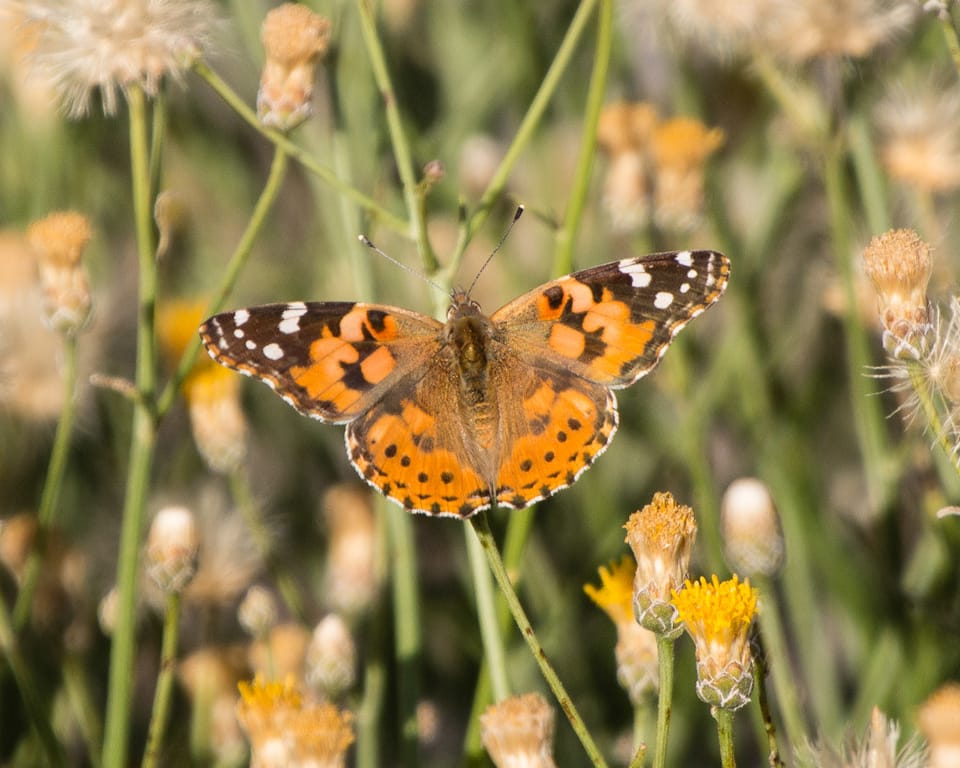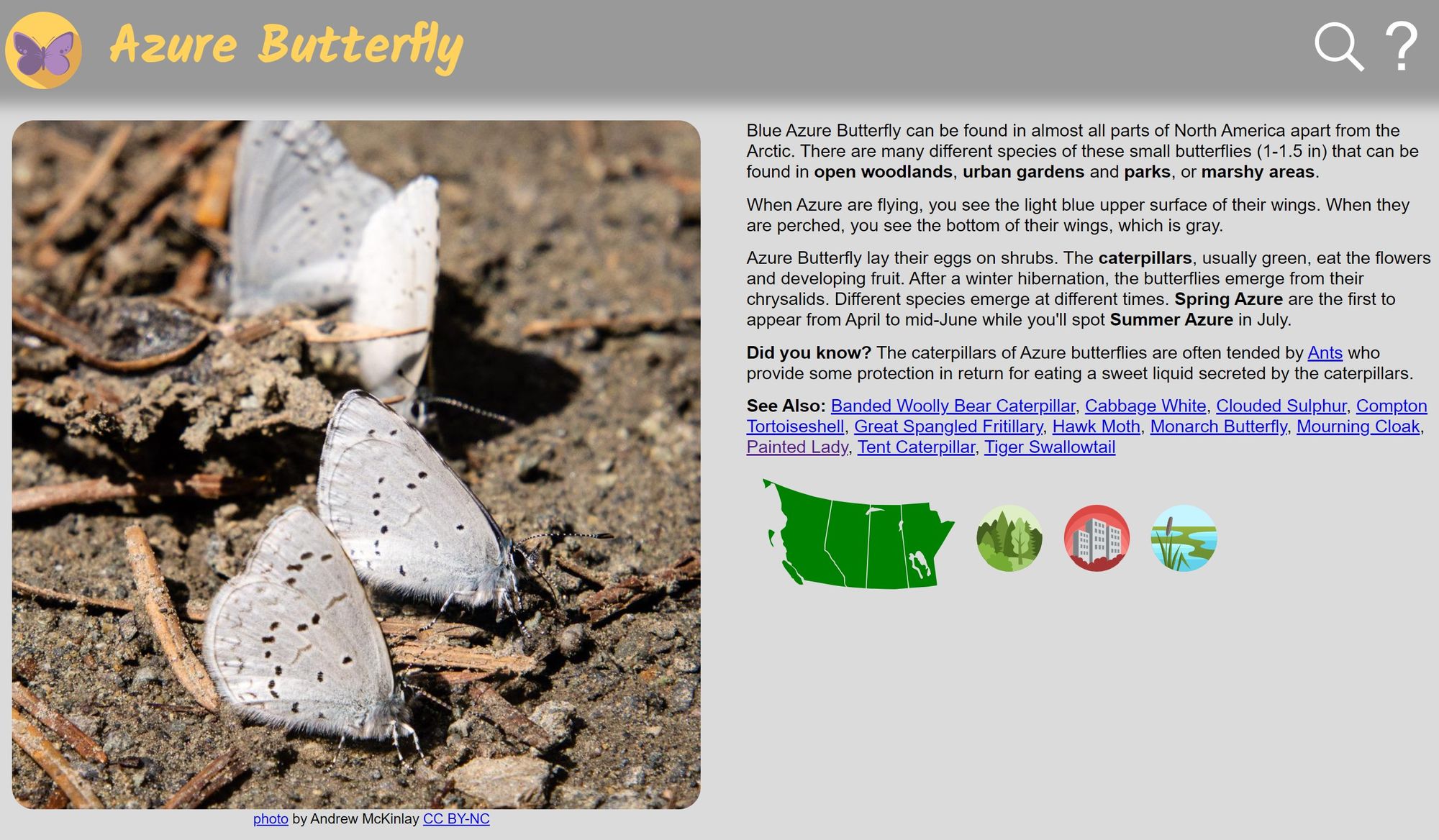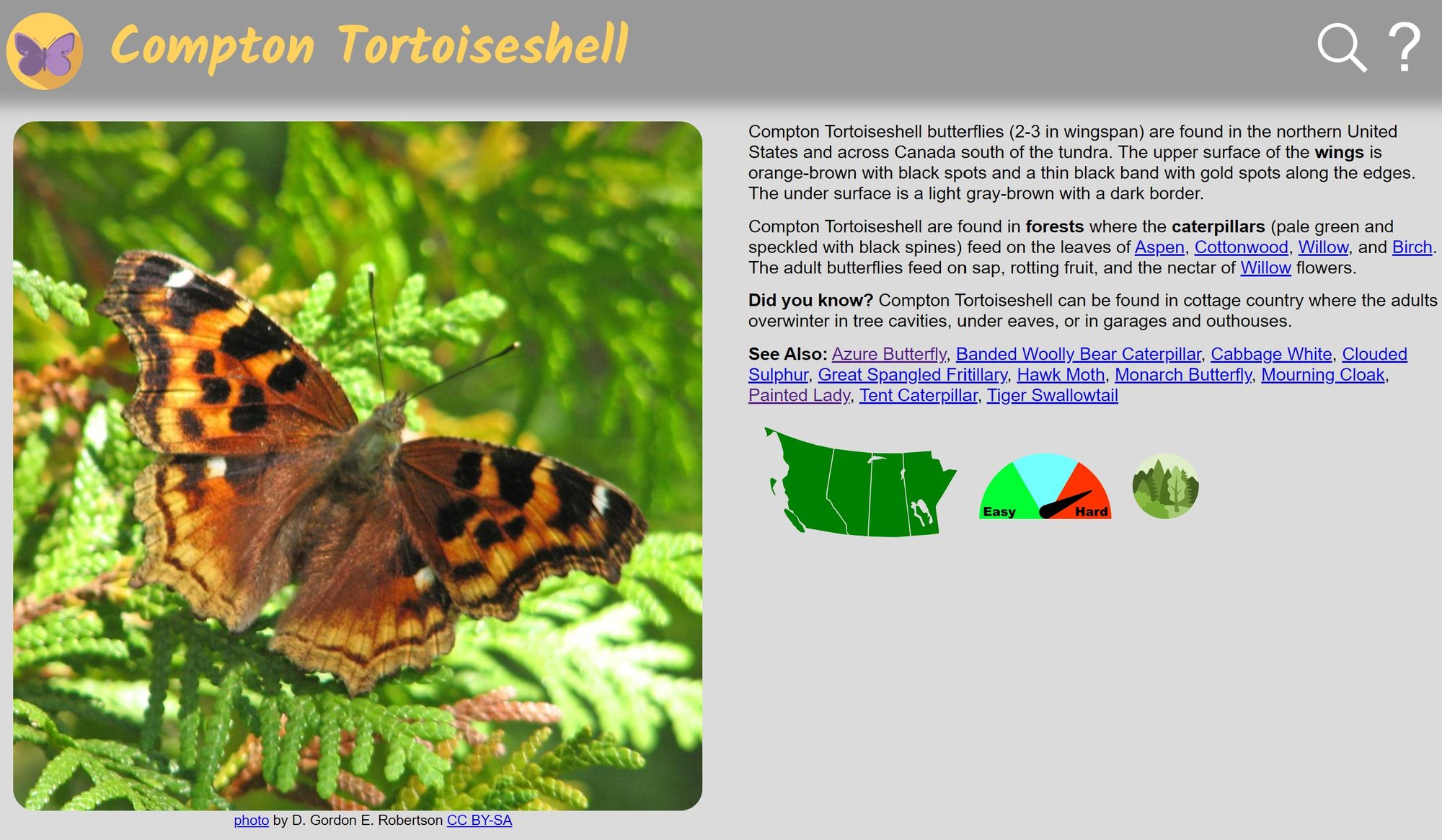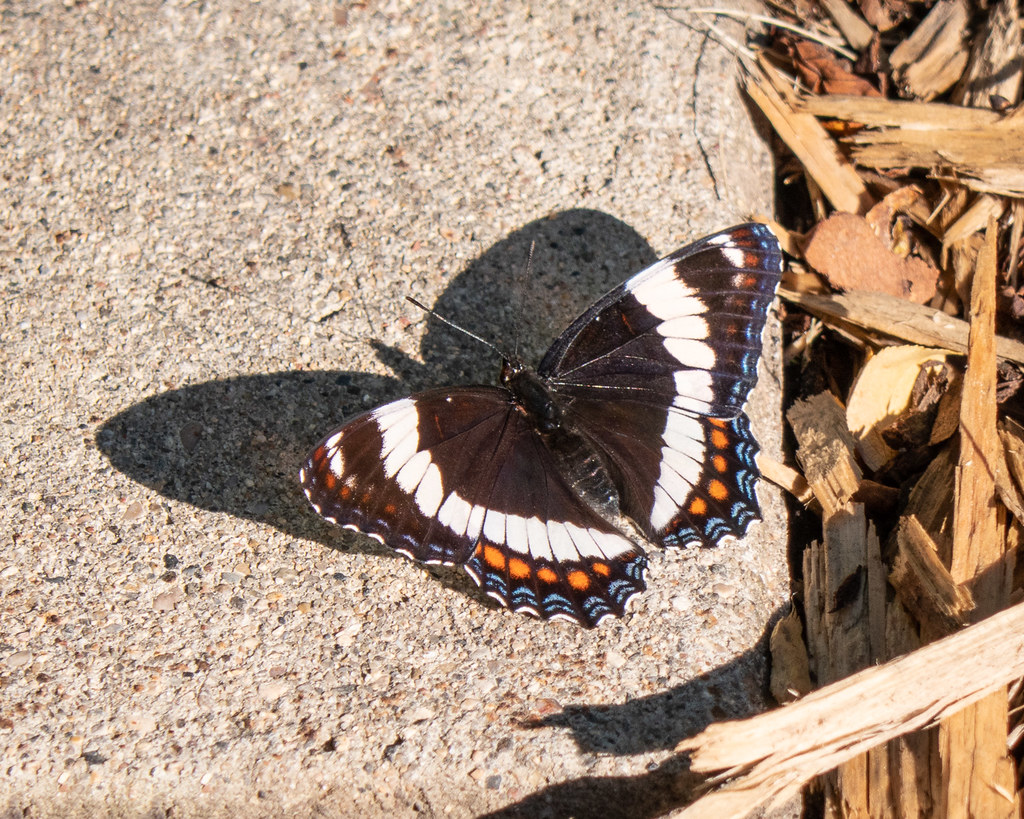Butterflies of Western Canada, Part Two

Both fragile and beautiful, butterflies are a visual delight. Here are 5 more butterflies you’ll find in Western Canada, in addition to the ones we introduced you to in Butterflies of Western Canada, Part One.

Azure
When Azure butterflies are flying, you see the light blue upper surface of their wings. When they are perched with their wings folded, you see the bottom of their wings, which is grey. The caterpillars are green. The small butterflies emerge from their chrysalids after a winter hibernation. The Spring Azures appear from April to mid-June. You’ll spot Summer Azures in July.
See, Taste, Smell: Butterflies use their antennae to check for wind and scents. They use chemical receptors on their feet to taste plants. Cabbage Whites use sight, smell, and taste to determine if they’ve found a plant where the larvae will be able to feed before laying their eggs.

Compton Tortoiseshell
Compton Tortoiseshell are found in Canadian forests south of the tundra. The upper surface of the wings is orange-brown with black spots and a thin black band with gold spots along the edges. The under surface is a light grey-brown with a dark border. The caterpillars are pale green and speckled with black spines.
Sunbasking: Compton Tortoiseshell overwinter in Canada and are one of the first butterflies (along with Mourning Cloak) to emerge in the spring. To stay warm, they turn their backs to the sun and open their wings to warm their thorax. This warms the muscles they use in flight. Sulphurs rest with their wings folded and lean to one side to warm the underside of their wings.
Red Admiral
Red Admiral butterflies have a bright red band along the edges of their black wings. They’re found in moist woodlands and empty downtown lots where they lay their eggs on stinging nettle. The caterpillars are black with white spots and spines.
Lunchtime: Many butterflies live on flower nectar - but not all. Some, such as Red Admirals, drink from tree sap, rotting fruit, or bird droppings.

Western White Admiral
Western White Admirals can be found in western Canada and Alaska. They have a black body with a white band like the regular White Admiral with the addition of orange spots on both the top and bottom sides of the wings. The caterpillars are brown and white with mixed colours and resemble bird droppings. They feed on the leaves of trees and shrubs.
Fragile: Butterfly wings are composed of thin layers of the protein chitin (also found in human hair and nails) covered with thousands of tiny scales, making them the only insect with scales. A network of tiny veins runs through the wings.

Lorquin’s Admiral
Lorquin’s Admirals are large black butterflies with a white band across their wings and orange-red tips on both surfaces. They can be found in southern BC and southwestern Alberta. They prefer bare, grassy patches on a south-facing slope with dense shrubs or trees at the upper end that are warmed by the sun. The caterpillars are brownish-yellow with white patches.
Guard Duty: Viceroy are strong, fast flyers, but you’re most likely to spot them when they are perched on a branch or slowly patrolling their territory. Male Admirals fly out to investigate other butterflies, attacking males aggressively until the intruders leave their territory. Female Red Admirals will only mate with territory-holding males.
See Also
Butterflies of Western Canada, Part One
Nature Companion, a free app/website introducing many of the plants and animals found in Canada’s four western provinces
Photo credit (top): Painted Lady Butterfly https://www.flickr.com/photos/apmckinlay/36980444964
EcoFriendly West informs and encourages initiatives that support Western Canada’s natural environment through its online publication and the Nature Companion website/app. Like us on Facebook, follow us on Twitter, or subscribe by email.

Member discussion